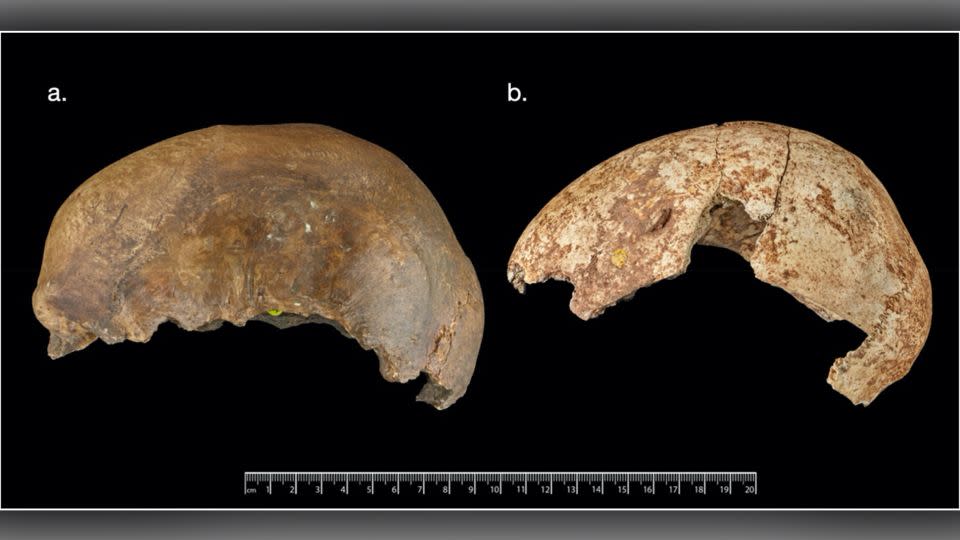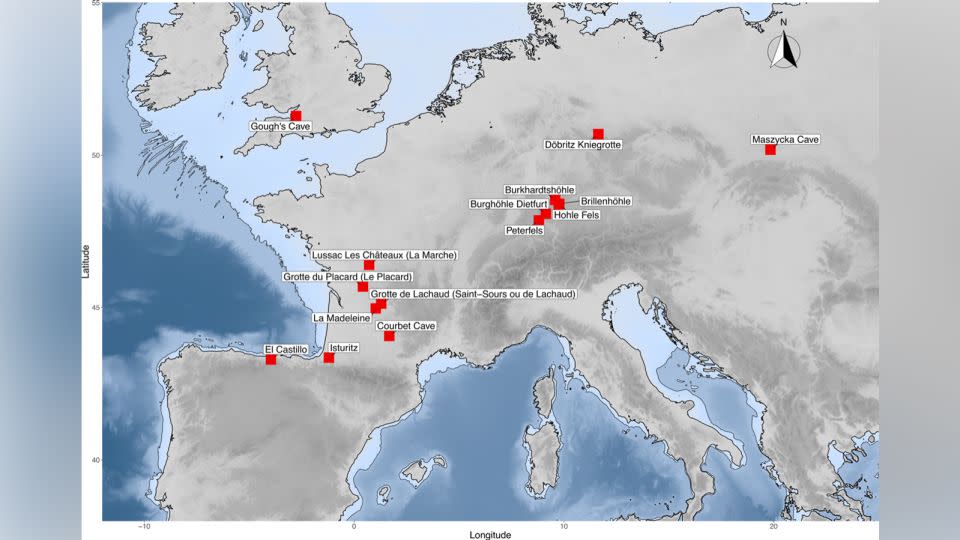Cannibalism was a common funeral ritual in Europe 15,000 years ago, study finds
Cannibalism was a routine funerary practice in Europe about 15,000 years ago, with people eating their dead not out of necessity but rather as part of their culture, according to a new study.
While researchers previously found gnawed bones and human skulls that had been modified into cups at Gough’s Cave in England, a study published in the journal Quaternary Science Reviews suggests this was not an isolated incident.
Their research focused on the Magdalenian period of the late Upper Paleolithic era. The Magdalenians lived some 11,000 to 17,000 years ago.
Experts at London’s National History Museum reviewed literature to identify 59 Magdalenian sites that have human remains. Most were in France, with sites also in Germany, Spain, Russia, the United Kingdom, Belgium, Poland, the Czech Republic and Portugal.
They were able to interpret the funerary behaviors at 25 of the sites.
Fifteen showed evidence of human remains with chewing marks, skull bones with cut marks and bones purposefully broken in a pattern associated with the extraction of bone marrow for nutrients, indicating that cannibalism was practiced.
There was also evidence to suggest that in some cases human remains were mixed with those of animals.
The ritualistic manipulation of human remains and its frequent occurrence at sites across northern and western Europe suggested cannibalism was a burial practice – rather than to supplement diet – widespread in Magdalenian culture, researchers said.
“[It is] undeniable, that the frequency of cannibalistic cases among Magdalenian sites exceeds any incidence of this behaviour among earlier or later hominin groups, and suggests that mortuary cannibalism was a method Magdalenian people used to dispose of their deceased,” the study said.

“Instead of burying their dead, these people were eating them,” study coauthor Silvia Bello, a paleoanthropologist and principal researcher at the National History Museum, said in a press release.
She added that cannibalism was “not simply practiced out of necessity.”
“That in itself is interesting, because it is the oldest evidence of cannibalism as a funerary practice so far known,” Bello added.
Funeral behavior associated with genetic ancestry
Researchers were also able to obtain genetic information from eight sites and combine it with the archaeological evidence to identify a relationship between funerary behavior and genetic ancestry.
They found that there were two distinct ancestral groups present in the region during that period – one of Magdalenian culture and another called the Epigravettian, a different European and geographically-distinct human culture.
Researchers found those belonging to the Magdalenian culture in northwestern Europe preferred to eat their dead, while humans from the Epigravettian culture preferred to bury their dead without cannibalism.
“There was a shift towards people burying their dead, a behaviour seen widely across south central Europe and attributed to a second distinct culture, known as the Epigravettian,” the Natural History Museum said in the release.

The presence of regular burial during the Upper Magdalenian was down to the migration of individuals with Epigravettian-related ancestry into areas previously inhabited by people with Magdalenian-related ancestry who practiced funerary cannibalism, the study suggested.
“We believe that the change in funerary behaviour identified here is an example of demic diffusion where essentially one population comes in and replaces another population and that brings about a change in behaviour,” said William Marsh, postdoctoral researcher at the museum, in the press release.
These are preliminary results and further analysis of the results at a larger scale is needed to fully examine the findings, the study authors said.
Thomas Booth, a senior laboratory research scientist at the Francis Crick Institute who was not involved in the study, told CNN Thursday: “We’re missing the remains of most people who lived in Europe during the Palaeolithic and so it can always be tricky to be sure of what people did with their dead.
“However, this study provides pretty convincing evidence that ritual funerary cannibalism was practiced by people across Europe 20,000-14,000 years ago.”
Sign up for CNN’s Wonder Theory science newsletter. Explore the universe with news on fascinating discoveries, scientific advancements and more.
For more CNN news and newsletters create an account at CNN.com

